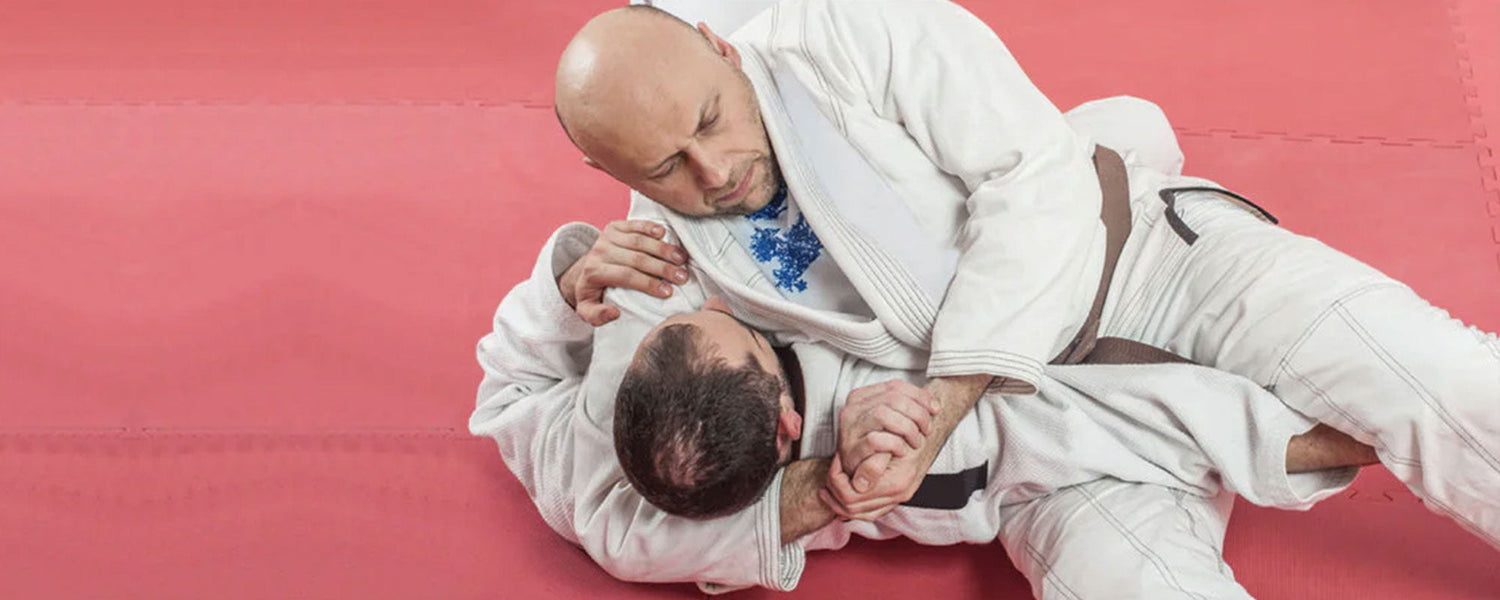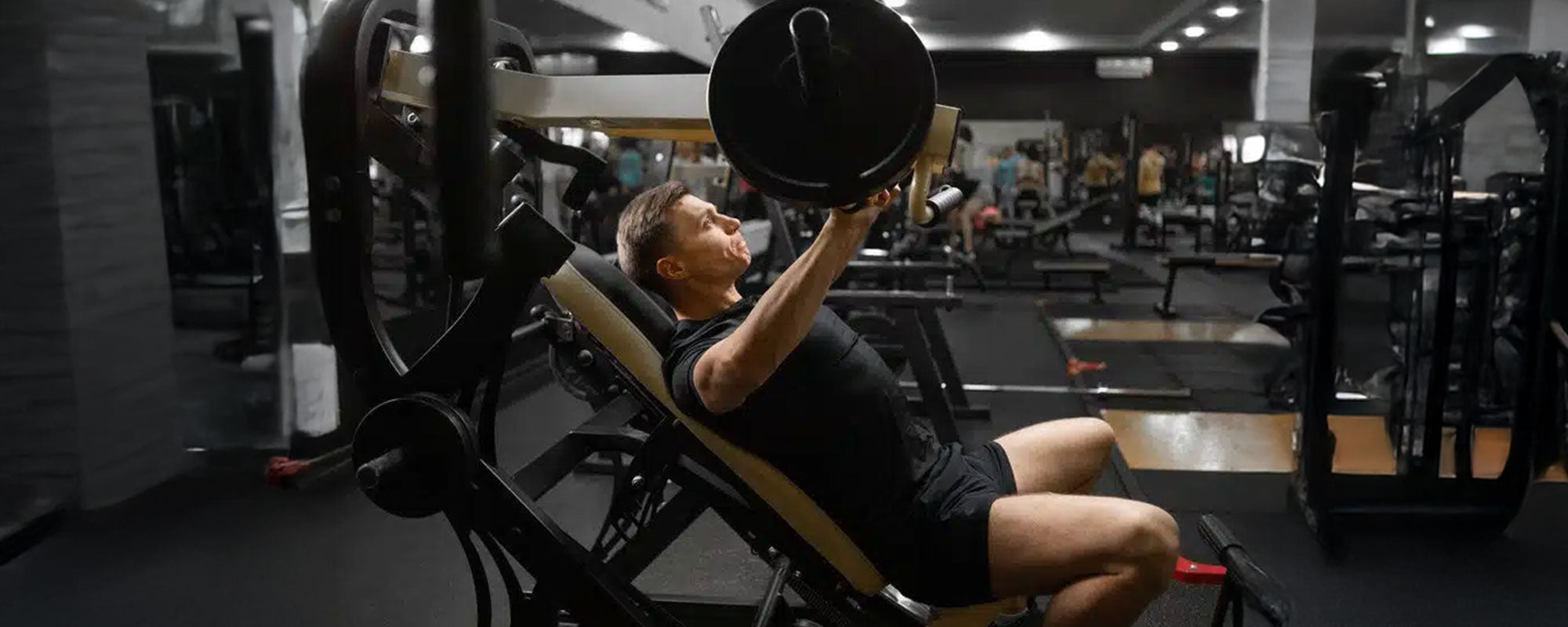Table of content
Right off the bat, it’s impossible to rank the damage an injury does because it varies with each individual.
You could have something that isn’t physically as disturbing but causes psychological trauma.
BJJ is inherently a gentle martial art that is designed for self-defense and is one of the few fighting styles of the world that discourages causing damage.
This is why it’s one of the safest martial arts that is fun for everyone.
However, since BJJ is in its essence, a combat sport, you’re bound to face some very common minor injuries while avoiding the chances of sustaining a career-ending one.
BJJ has less than half the injury risks associated with martial arts like Judo, Karate, Muay Thai, etc.
In a study that involved almost 2500 BJJ matches in competitions, here’s a breakdown of the most common injuries people sustained:

Although these studies involved competitions that banned heel hooks, it’s worth wondering how the counts for leg-related injuries would increase.
1. How to Avoid Injuries?
1.1. Banned/Illegal Moves Are Forbidden For A Reason
First off, the most logical thing you can do is identify some of the most ridiculous and dangerous moves in Judo, BJJ, Luta Livre, Wrestling, or any other grappling-based fighting style.
You’ll find very common understandings that all these disciplines share about particular maneuvers that are undoubtedly deadly if not very likely to end careers.
Some of these dangerous moves include:
- Cervical neck cranks
- Flying arm-bar
- Flying Triangles
- Jumping or flying guard pull
- Kani basami or scissor leg takedown
- Bicep slicer
- Double underhook stack pass
- Slams and wrist locks
Right off the bat, if you’re a beginner who doesn’t want to injure someone and especially yourself, lay the rules out clearly and participate in a safe gym environment to avoid common BJJ injuries. The next point will illustrate how.
1.2. Avoid Explosive/Strong/Immature Partners
We’re all aware of the memes and stories about the overzealous or overexcited wrestling-background white belts who just don’t know how to roll easily.
It’s not your fault that someone has a competitive background and certainly not your responsibility to give them the explosive sparring session that they need to train. This is especially for BJJ practitioners who have to deal with people bigger than them.
You can refuse any sparring session that you want and to avoid learning things the hard way, try to watch people rolling with other people before rolling with them. It’s way easier to spot a college football or a wrestling background white belt in a few minutes.
Obviously, if you’re new, a good instructor will make sure to pair you up with themselves if not a brown belt or above to give you the intended learning experience.
Even MMA veterans like Ramsey Dewey encourage people to learn how to refuse because they experience people going way too hard on them. Ramsay has had his skull fractured from his fighting career, and now teaches people MMA.
While he’s still an expert in the sport, he can’t possibly sustain headshots without risking serious permanent damage.
Whenever he encounters people who go for headshots and don’t show signs of slowing down in the initial minute, he respectfully refuses to spar any longer with them and have them go with someone else who can match their pace to bring them down.
Unless you’re an expert black belt instructor with years of training experience, it’s not your job to deal with every white belt or explosive athlete who wants to roll.
The temporary guilt you’ll feel for saying no is nothing compared to the years of activity you’ll sacrifice if you sustain a bad injury.
Pick a group of people that you have no problem communicating and rolling with.
These are going to be the only people you roll with because they understand your pace and your limits.
*Important: It is imperative that you tell your instructor as well as anyone you roll with if you have any medical condition, psychological trauma or specific difficulties that you can’t compromise on*.
A BJJ gym is supposed to be a place of training and your partners are supposed to be your family. If you feel uncomfortable, talk to your instructor who’s bound to act in your favor.
You can refuse to roll with people even on random days just because you don’t feel like going that fast or that slow, etc. Older practitioners are also encouraged to refuse explosive new guys to avoid sustaining injuries.
If the instructor doesn’t seem to be doing anything, immediately change gyms. You’re guaranteed to find a place with amazing BJJ practitioners who’re far more understanding and compromising.
1.3. Train for Flexibility and Strength
There are some pretty nasty movements in BJJ that are definitely not part of anyone’s normal routine.
This means that your body is going to be moving and engaging muscles and bones it doesn’t use frequently.
From the basic acts of shrimping and bridging to surviving neck cranks and muscle extensions, etc., you need to train your body to be able to withstand damage to a certain extent.
It’s no secret that flexible and athletic people are far superior in adapting to a large variety of situations. That’s why you should engage in workouts that promote flexibility and strength.
The same thing goes for strength training. Not only does it help you build stronger muscles, but it also adds mass that undeniably and ultimately helps protect your ligaments, bones and internal organs from damage.
1.4. Hygiene
It may not seem directly relatable but you have to understand that not observing proper hygiene will result in medical problems if not musculoskeletal injuries.
Whether you’re wearing a BJJ Gi or a BJJ rash guard, you must wash your apparel every time you attend class and make it home. From bacterial infections to viruses and fungi, all kinds of nasty microbes can affect people rolling together in a dojo.
If you have flu, skin infections, or any viral or transmittable problem, you should stay off the mats and observe from a distance. While it may seem like torture, just try to convince yourself that it’s better not to infect everyone you roll with.
Learn how to wash your BJJ Gi here.
1.5. Always Invest in Physiotherapy or Chiropractors
Booking a massage or physiotherapist appointment can prove very beneficial in terms of relaxing your muscles and easing the tension that builds up.
Every now and then, BJJ athletes have to go through spinal cranks, neck cranks, and other moves that aren’t necessarily painful or putting you to sleep but are sowing the seeds for long-lasting pain.
Physiotherapists are competent medical professionals who can identify and treat injuries that people mistake for casual pain. A very common example of this is the mallet finger.
Orthopedic experts state that many people don’t recognize the potential problem in having a finger that bends just at the tip. For them, it’s just a cramp that’ll go away later on.
But almost 3-4 weeks later, patients show up with crooked fingers and wonder what’s wrong.
Like all combat sports training, BJJ is bound to present you with musculoskeletal problems that aren’t all permanent and fatal but can be very painful and long-lasting if you don’t comply with the doctor’s orders.
This brings us to our next point.
1.6. Sustain, Learn, Adapt, Recover and Avoid
It’s not wrong to make a mistake or sustain an injury. Regardless of whatever happened, the point should be to focus on learning what went wrong, making sure it never happens again, and giving yourself sufficient recovery time without compromising training.
While this seems like the ideal to-do list for when you’re injured, a lot of people face several problems achieving this.
For many, the trauma associated with a serious injury can be devastating in terms of their BJJ practice. And that’s not limited to people who’ve sustained the injury themselves.
Even people who’ve witnessed such an event can be traumatized and discouraged from practicing BJJ or a specific technique.
If not the trauma, several people have a problem adjusting to the injury and training while ensuring they’re recovering.
The fact remains that your recovery from your injured state should be the top priority. Next comes learning what happened and avoiding circumstances that led up to the situation.
After that, and only if the doctors state that you’re good to go, should you try to go back on the mats.
Gordon Ryan, one of the best submission grapplers of our generation, told his story about going through an MCL reconstruction surgery. Gordon recommends putting on your brace or bandages for even more than the medically prescribed period to ensure complete recovery.
You can’t risk putting pressure on injured limbs, ligaments, etc. and thus, should train with people who understand what you’re going through and what you can and can’t work on.
1.7. Tap Anyway
Although it’s crazy for it to happen in a regular gym roll, the chances of individuals suffering because they didn’t tap in time are exponentially high everywhere.
Almost every other day, someone who fails to acknowledge or accept the fact that they’ve been caught in a submission attempt will try to power through it.
You need to understand that with every submission, the one applying it is never going to know when your body’s reaching its limit until everyone in the gym hears the snap.
It’s always up to the individual caught in the submission to accept and admit defeat immediately.
So, what if you couldn’t go home with a win? You’re going back with your health and quite possibly your life. And that’s worth more than any belt or prize.
Always make sure to tap early even if you think that you can get out of it. If you got caught, tough luck! Start again and make sure you don’t get to the same point again.
The thing that people don’t realize is that even with a harmless choke that puts people to sleep, you’re risking strokes that can prove fatal or cause permanently irreparable damage if proper aid isn’t administered in time.
Always tap early and try to make sure you know if an opponent is giving in to their ego too much to tap. Give someone the win rather than going home with guilt or pain. It’s one of the most typical white belt mistakes you can make.
1.8. Too Much Training
There is such a thing as too much training, and medical professionals call it spondylolisthesis. This is a spinal condition that happens when one of our vertebrae slips out and onto the vertebra below.
Other than the fact that you run the risk of incurring more injuries the more you roll, you are also putting yourself at risk of problems like spondylolisthesis that can result in mild to excruciating lower back pain.
That’s why the next time you feel like your back is giving you a hard time for consecutive days, don’t roll and immediately report to a doctor.
1.9. Diet
Many people might not believe this but your diet has a lot to do with how well you are at sustaining and recovering from injuries.
As always, sugar and fast food are the worst enemies because you’re not giving yourself the protein and carbs that your muscles need to recover.
Similarly, omitting items and categories of nutrients like milk can deprive you of essential calcium and vitamins that are crucial and helpful in recovery.
Not only will your dietary choices affect your recovery, but they will also improve your body’s stamina, endurance and response to pain while also enhancing your reaction times.
All the things stated above are going to help you avoid most of the common as well as the most dangerous injuries in BJJ.
However, to help you figure out exactly what to watch out for, let’s take a look at the most vulnerable parts of our bodies that are liable to get injured in BJJ: :
2. Fingers
Gripping is one of the most important things in BJJ and every practitioner needs to rely on their grips to establish control in any given situation.
This is why almost every BJJ athlete and practitioner has had to tape their fingers in order to get on with training.
Apart from the traumatic finger polyarthritis and polyarthrosis (when multiple joints and ligaments go through intense wear and tear), the most common finger-related injuries people have suffered in BJJ include:
- Bone fracture or break
- Finger dislocation
- Finger Sprain or Hyperextension
- Jersey Finger
- Boutonniere Deformity
- Bursitis
3. Shoulders
Our shoulders are also liable to undergo trauma and hyperextension that can result in:
- Rotator Cuff Tears
- Rotator Cuff Tendinopathy
- Impingement Syndrome
- Bursitis
4. Neck
Neck injuries are often the most disturbingly dangerous, though they are rare. Our neck isn’t supposed to be driven into the ground or twisted with our whole-body weight on top.
Cervical sprains and strains from regular but easily durable twisting and turning of the neck aside, you run the risk of damaging your nervous system if the trauma causes axial loading (like a pile driver) and there’s a disc injury.
People who suffer such injuries experience cervical radiculopathy symptoms like tingling, numbness, etc. down your arms, shoulders and fingers that result from a ‘pinched nerve’ as people like to call it.
While it may sound simple, this cannot only cause extreme pain and difficulty in moving, but it is also only a symptom that can result from a number of severely serious problems. You can decrease the risk of getting severely injured by incorporating flexibility workouts for BJJ.
5. Knees
Leg locks have become a norm in BJJ and submission-based grappling. When it comes to the knees, you’re most likely to hear about people getting torn MCL and ACL. Here’s an overview of what they both are and which is worse.
The ACL or the anterior collateral ligament is responsible for keeping your knees steady by preventing irregular movements such as turning too much or hyperextending.
If you do either of those, you are likely to injure your ACL, or what we refer to as an ACL tear. The popping sound of the ACL tearing can be heard out loud by everyone.
There will be intense pain that comes on almost immediately followed by swelling of the area within an hour or two. You’ll feel it’s almost impossible to walk and even harder to straighten or extend the knee.
The medial collateral ligament or the MCL prevents the knee from bending inward more than it’s supposed to, whereby it’s obvious that the MCL plays a crucial part in the rotation of the knee.
Whenever your knee gets hit from the outside and the ligaments on the inside are stretched enough to cause a tear, it’s known as an MCL tear.
Unlike the ACL one, the MCL tear doesn’t come with a popping sound, which is how we’re able to distinguish between both.
Of the two, ACL tears are considered to be the most dangerous as they can require surgeries to be treated, whereas MCL tears can heal on their own.
However, the rest of the symptoms and the pain that comes with both these problems are almost the same.
6. Head
Chokes and concussions are what scares most people, and especially medical healthcare providers because they can cause serious irreparable damage. You can be looking at certain death if not permanent brain damage if you receive repeated strikes to the head.
There have been many boxers who became Hall of Famers but fell prey to degenerative neural diseases and disorders that resulted in RHIS (Repeated Head Injury Syndrome), shrinking of the brain, CTE (Chronic Traumatic Encephalopathy) that can result from an estimated 17 concussions, etc.
While BJJ doesn’t allow striking and is the least concussive sport when it comes to learning martial arts, there are risks of slamming or being slammed to the mat.
Furthermore, when it comes to BJJ submissions like chokes, stopping blood flow to the brain for several minutes can result in permanent brain damage.
Although the general practice is to tap out before you lose consciousness, there are times when people applying the choke won’t notice how long you’ve passed out.
If the referee or someone else doesn’t lift your legs up and administer proper care, you run the risk of getting carotid artery dissection or other endovascular injuries that can cause severe damage.
7. Takeaway: Is BJJ Safe?
Even after all the above, it’s still safe to say that it’s very rare to see career-ending injuries in BJJ as compared to other sports like football, soccer, basketball, MMA, boxing, etc.
Always remember to protect yourself at all times and tap out and go home or to the doctor early on to prevent damage.
It’s hard to fight the urge to not tap out, but it’s harder to watch the mats from the sidelines with shattered bones for the rest of your life.
So, think about your choices and leave that ego at the door when you walk to the mats because you’re not there to cause or sustain injuries.













Leave a comment
This site is protected by hCaptcha and the hCaptcha Privacy Policy and Terms of Service apply.